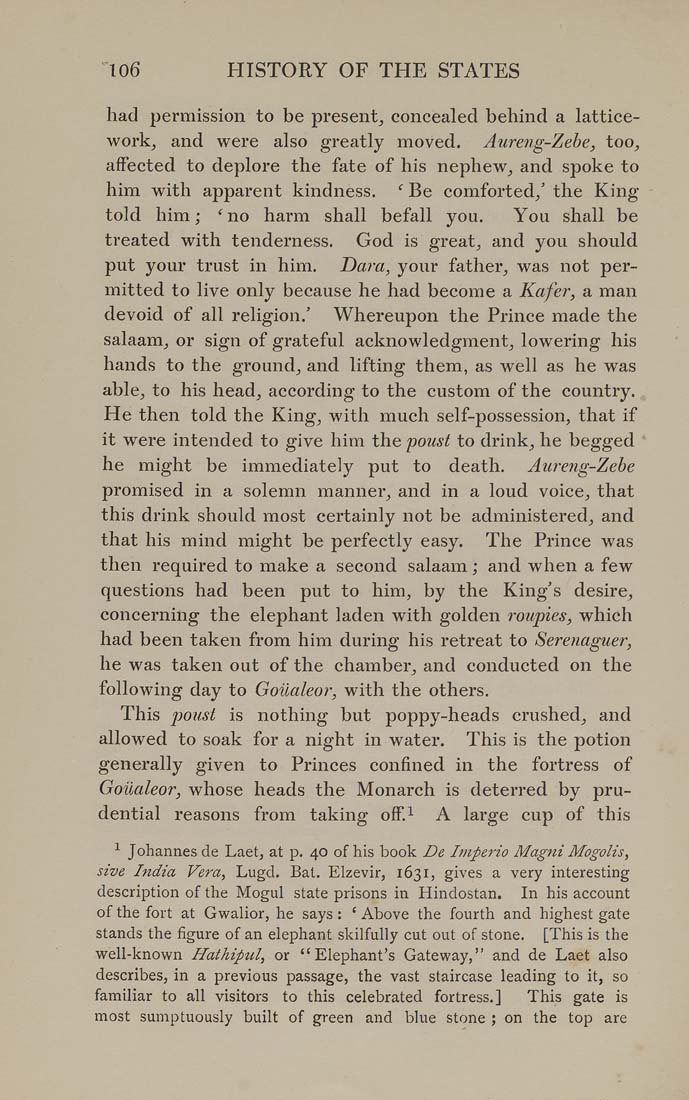106 HISTORY OF THE STATES
had permission to be present, concealed behind a lattice¬
work, and were also greatly moved. Aureng-Zebe, too,
affected to deplore the fate of his nephew, and spoke to
him with apparent kindness. ' Be comforted,' the King
told him; ' no harm shall befall you. You shall be
treated with tenderness. God is great, and you should
put your trust in him. Dara, your father, was not per¬
mitted to live only because he had become a Kafer, a man
devoid of all religion.' Whereupon the Prince made the
salaam, or sign of grateful acknowledgment, lowering his
hands to the ground, and lifting them, as well as he was
able, to his head, according to the custom of the country.
He then told the King, with much self-possession, that if
it were intended to give him the poust to drink, he begged '
he might be immediately put to death. Aureng-Zebe
promised in a solemn manner, and in a loud voice, that
this drink should most certainly not be administered, and
that his mind might be perfectly easy. The Prince was
then required to make a second salaam; and when a few
questions had been put to him, by the King's desire,
concerning the elephant laden with golden roupies, which
had been taken from him during his retreat to Serenaguer,
he was taken out of the chamber, and conducted on the
following day to Goiialeor, with the others.
This poust is nothing but poppy-heads crushed, and
allowed to soak for a night in water. This is the potion
generally given to Princes confined in the fortress of
Goiialeor, whose heads the Monarch is deterred by pru¬
dential reasons from taking off.! A large cup of this
' Johannes de Laet, at p. 40 of his book De Itnperio Magni Mogolis,
sive India 'T'era, Lugd. Bat. Elzevir, 1631, gives a very interesting
description of the Mogul state prisons in Hindostan. In his account
of the fort at Gwalior, he says : ' Above the fourth and highest gate
stands the figure of an elephant skilfully cut out of stone. [This is the
well-known Hathipul, or "Elephant's Gateway," and de Laet also
describes, in a previous passage, the vast staircase leading to it, so
familiar to all visitors to this celebrated fortress.] This gate is
most sumptuously built of green and blue stone ; on the top are
|








